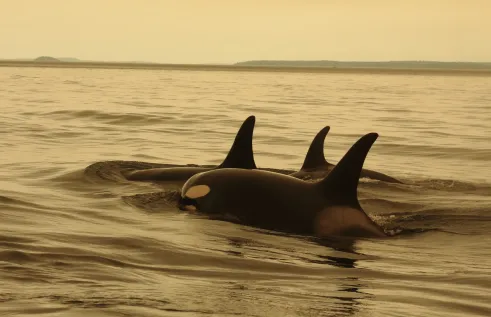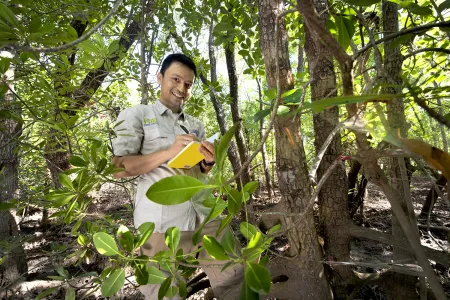News Article
Mangroves could turn tide on carbon output
Research has found that changes in current land management practices in the mangrove forests of West Papua Province, Indonesia could have significant impacts on the country’s future emission reduction targets.
The research published in Global Change Biology found that future escalation of land-use change in Papua mangroves could have implications for Indonesia’s Nationally Determined Contributions (NDCs) under the Paris Agreement of 2015.
Charles Darwin University’s Research Institute for the Environment and Livelihoods PhD candidate Sigit D. Sasmito said current land management practices in Papua’s mangroves reduced carbon stocks substantially.
“Our evaluation of blue carbon stocks and their potential emissions and removals suggest that current land management practices in Papua’s mangroves, such as forest harvesting and small-scale aquaculture, reduced carbon stocks substantially,” Sigit said.
“Given the Papua mangrove estate accounts for 50% of Indonesia’s 2.9 million hectares of mangrove area, the region is clearly an important asset for nature-based climate change mitigation policy.”
He said that while mangroves were recognised as significant “blue carbon” sinks, their carbon storage capacity dramatically depended on a variety of ecological factors.
“We discovered there is a substantial natural range of blue carbon storage as a function of location and land use,” Sigit said.
“We also found that mangrove conversion to aquaculture led to live biomass carbon stocks losses of 85%. Combining carbon stock losses from live biomass and soil carbon pools from mangrove to aquaculture conversion were found to reduce carbon stocks by 66%.”
He said the research had implications for future land management, with mangroves considered a nature-based solution that could help repair the impact of climate change on the planet.
“The future escalation of current land-use change in Papua mangroves may result in substantial greenhouse gas emissions,” he said.
“The research showed that if conducted in an adequate and long-term scale, mangrove regeneration had the potential to contribute to Indonesia’s NDCs by increasing mangrove carbon stocks and offsetting anthropogenic greenhouse gas emissions.”
Center for International Forestry Research (CIFOR) principal scientist Daniel Murdiyarso said carbon emissions associated with mangrove land-use change must be taken into account to ensure accurate accounting.
“Overall, this shows us that policies to conserve mangroves as carbon sinks could help Indonesia reduce land-use related emissions,” Dr Murdiyarso said.
“But it also shows that we must proceed with caution to ensure that mangrove seedling regeneration programs are based on hydrogeomorphic suitability, rather than planting for convenience around areas of potential land-tenure conflict or inappropriate habitats including mudflats and beaches.”
Related Articles

Cotton trash to treasure: Project using waste to grow new mushroom industry
Supermarket shelves could be stocked with mushrooms grown from the Northern Territory’s cotton waste, with a Charles Darwin University research project exploring the possibility of broadening the region’s agricultural industry.
Read more about Cotton trash to treasure: Project using waste to grow new mushroom industry
Stereotypes holding back Australia’s recreational fishing future, new study finds
Outdated stereotypes about who a “real fisher” is could be costing Australia’s recreational fishing industry valuable talent, creativity, and growth, new research from Charles Darwin University suggests.
Read more about Stereotypes holding back Australia’s recreational fishing future, new study finds
Global body adopts policy to protect Earth’s old, wise and large animals
The International Union for Conservation of Nature (IUCN) has recognised Charles Darwin University-led research into the Earth’s oldest animals with the adoption of the ‘Longevity Conservation’ global policy principle.
Read more about Global body adopts policy to protect Earth’s old, wise and large animals
